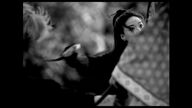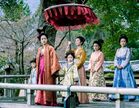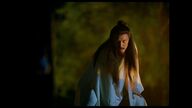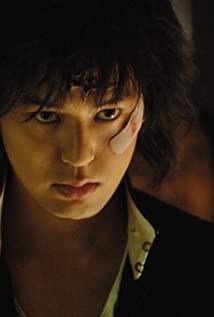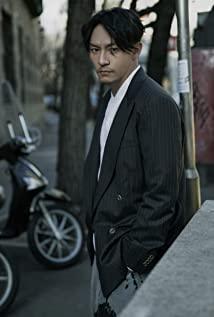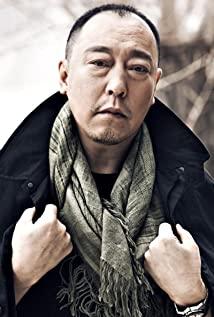Perhaps the so-called "East" here is to distinguish the "West". But this makes people even more puzzled: Westerners may not be able to understand "Nie Yinniang", but Chinese people, with stubborn classical Chinese, wanting to tell stories, can all these be easily understood and familiar to us? ? Probably not either. Therefore, it seems that viewing Hou Hsiao-hsien in terms of "Oriental Aesthetics" is undoubtedly imposing knowledge that they may not be familiar with themselves. Hou Hsiao-hsien's "Nie Yinniang", in the final analysis, is only Hou Hsiao-hsien's. It imprints Hou Hsiao-hsien's personal traces and shines through Hou Hsiao-hsien's personal style. Judging from Nie Yinniang, his dimension is by no means geographical, but history. This is the fundamental reason why it is difficult for us to thoroughly understand what Hou Hsiao-hsien said, and it is also the characteristic of Hou Hsiao-hsien's personal aesthetic paradigm.
Hou Hsiao-hsien's characteristic, in short, is "cleanliness". In various interviews after watching, Hou repeatedly stated his requirements for the film, saying that anything that does not conform to his own ideas (what others call "intuition") will eventually be killed. This is undoubtedly one aspect of "cleanliness". In terms of editing, Hou Hsiao-hsien's intuition is not allowed to be violated or tainted at all, so no matter how miraculous it looks to others, as long as there is a little problem, Hou will be merciless. From a certain point of view, it is this approach that directly leads to the "difficulty" of "Nie Yinniang". Judging from the results, the plot of the whole film has only a delicate skeleton, and those who prefer montage can't wait for it. Branches, those small passages that make the structuralists play and live, have long been cut away. But on the other hand, as we have seen, Hou Hsiao-hsien also built unparalleled visual wonders under the influence of "cleanliness", on the opposite side of "minimalism". The lingering clouds and mists waiting, those natural landscapes that are not visited by any tourists, and those deep focus and long mirrors, solemnity and swaying that can only be formed after countless ideas and carvings, have pushed "Nie Yinniang" to another extreme and peak. The confrontation between "simple" and "luxury" makes the pure image stand out, and the story can only succumb to it, which also makes the audience who hope to see the novel inevitably disappointed. Perhaps it can be said that under Hou Hsiao-hsien, "Nie Yinniang" was simplified from a novel to "poetry", and "poetry" is indeed the "other shore" that Hou Xinxin wanted to reach.
The meaning here is not to say that the story is not important; on the contrary, the screenwriter has always played a pivotal role and role in Hou Hsiao-hsien's directing career - Hou Hsiao-hsien and Xie Haimeng, Zhu Tianwen and Acheng have been writing "Nie" for six years. The historical facts are even accurate to the month, which shows that the author's intentions are extraordinary. However, as James Uden argues in his monograph "No Man Is an Island: The Cinematic World of Hou Hsiao-hsien," Hou's plots were already in a state of fragmentation as early as in "Love in the Wind" and "City of Sadness." It makes people feel like a young man passing by the neighbor's house, peeping over the fence, and the shadows are slanted, but he hears people's words and does not see the shadows. The reason why Hou dealt with it this way is because no one can know everything about history; even "City of Sadness" is like this, and "Nie Yinniang", which is hidden in the depths of history, can't escape this theory. This is probably a key to interpreting "Nie Yinniang", and it is also the true meaning of a certain "Hou's Aesthetics".
It is true that Hou Hsiao-hsien is definitely not the first person to shoot martial arts. Not to mention "Chivalrous Girl", which was already the top Chinese martial arts movie in the 1970s, after 2000 alone, Ang Lee's "Crouching Tiger, Hidden Dragon" and Wong Kar-wai's "The Grandmaster" are among the master-level works in the three regions. , at first glance, there are Zhang Zhen in the two films, and there are also "chivalrous women", which makes people feel that "Nie Yinniang" is a bit "following the trend". Moreover, "Crouching Tiger, Hidden Dragon" is full of landscapes and wilderness, and "The Grandmaster" has also been prepared and researched for ten years, not to mention Liang Chaowei's arm bone was broken twice because of the fight with real swords and real guns. On the surface, "Nie Yinniang" seems to be more and more like the derivation and combination of "Reclining" and "One". However, the mountains and rivers of "Crouching Tiger, Hidden Dragon" are the background; Hou Hsiao-hsien's mountains and rivers are the protagonists. The so-called "Piao Piao is like a sand gull in the world." Without Dajiu Lake, Wudang Mountain and Shennongjia, Tang Yun would be completely incapable of expressing it. Completely lost the nature of grace and tyranny intermingled, and the appearance woven by love, hatred and hatred has disappeared. This logic just shows the uniqueness and difference of Hou Hsiao-hsien's creative ideas: what he wants to create is the world, not a story; what he wants to build is a country, not an atmosphere; what he wants to restore is reality, not fiction.
The creative concept of "Nie Yinniang" has an inseparable connection with Hou Hsiao-hsien's relationship with the Tang Dynasty, the "Xia" group and the "Tang Xia" group in a special era. Joining, also often provides rich material for Hou Hsiao-hsien's creation. Hou Hsiao-hsien likes Nie Yinniang, firstly because of the name of "Yin" mother, and secondly because of Nie's family history. The thousand-word "Nie Yinniang" original text is short and concise, the content seems legendary, and its meaning is to reveal the drama of the struggle in the town of Fanzhen. Hou Hsiao-hsien's screenwriting team kept the first half of the original story as the prologue of the film, and the whole film ended with Nie Yinniang and Mo Jingshou; ) Jiedushi Tian Ji settled in his home. As for the "wonderful hand empty-handed" in the original text, it became Tian Ji'an's family, Tian Yuan, and the father of Tian Yuan was the king of Dezong Zhenyuan and Zhaoyi (later Jiedushi) in the official history. The Zhaoyi marched Sima and the Mingzhou governor Shi Yuanyi, who had been fighting inextricably. In Zizhitongjian, Yuanyi "went to Weizhou" after the war, and Emperor Dezong ordered Wei Bo Jiedu to "appease" Tian Xu, the father of Tian Ji'an, so the two families were bound together, and it was undoubtedly a political first approach; Er's painstaking efforts to murder Hu Ji is also a ruthless move by the Yuan family in an attempt to gain the inheritance of the Tian family for generations.
The "grand epic" that spanned Wei Bo and Chen Xu in the original book has thus become a matter of the Wei Bo family, and the chivalrous woman Nie Yinniang is the direct victim of the loss of the "bamboo horse" in this marriage. In contrast, it is also based on textual research and interpretation. Gong Er in Wong Kar Wai's "The Grand Master" is the inheritor of revenge for his father and "chivalrous tenderness"; Nie Yinniang is not so much a chivalrous girl as she is politically involved or even crushed Ordinary people with destiny. If it is said that Tang poetry endows the people in Hou Hsiao-hsien's drama with the grace of "killing one person in ten steps, without leaving a thousand miles away", then the heavy documents endow Lian Dan with a precise political grasp, which makes the Tang Dynasty, especially the Middle Tang Dynasty, extremely special. The historical period has richer layers and heavier textures, making "Nie Yinniang" a "complex" enough for people to spy on the style of the times.
Perhaps any film itself is a "complex", especially for Hou Hsiao-hsien. Hou has developed extremely complex relationships with actors over his long career, so complex that without the actors, you can't capture what the film is about. For example, in "Flowers on the Sea", Hou Hsiao-hsien would completely overthrow and reconstruct the background of the characters because Tony Leung did not speak Suzhou dialect, and the same is true in "Nie Yinniang". However, the difference between "Flowers on the Sea" and "Nie Yinniang" is that the former "has already had too much text, and it is almost enough to prepare it with a book", while the latter needs to follow the actor's worrying lines before the script is completed. Various adjustments have been made to physical fitness, even at the expense of subverting highly creative ideas. Despite this, we still see Shu Qi's twisted downhill, Zhou Yun's words in an octave, the collective misinterpretation of the characters by mainland actors and the terrible articulation of Taiwanese actors. These core contents that can no longer be cut out have all become the terrible stains in "Nie Yinniang". What is even more frightening is that it is difficult for us to judge how much of Hou Hsiao-hsien's soul has been cut because of these strange factors. From this point of view, the huge gap between the pictures is not only the style, but also hard to say that it is not the result of objective factors. Fortunately, the continuation and dislocation of sound effects and music have made up for these gaps to a large extent, not only to make up, but also to surpass, it is the evolution and transformation from "completeness" to "exquisite", although such an idea is inevitably regrettable. . After all, it seems that "Nie Yinniang" could have been better and could have been perfect.
Times change. We watch Hou Hsiao-hsien from a distance, and Hou Hsiao-hsien is watching us from a distance. From then to now, Hou Hsiao-hsien has definitely not changed - this is not only the relationship between the author's film and the film's author, but also the original heart of Hou Hsiao-hsien's hero.
"The autumn water is long and the sky is long. The Jindu is in front of it, the water is in the sky, and the vast smoke is endless."
+++++++++++++++++++++++++++++++ ++++++++++++++++++++++++++++++++++
On September 2nd,
three new episodes of "Nie Yinniang" were added today, which is not only not boring , on the contrary, it feels more arrogant. Hou Hsiao-hsien's skill is still in addition to scheduling actors and editing spirit. To give a chestnut: Smoke is everywhere in Nie Yinniang, but after careful observation, it can be roughly divided into three types: the smoke of the temple, the smoke of the landscape and the smoke of the village. The artistic conception created by these three kinds of cigarettes is completely different from the meaning implied in them, and those who are smart can taste it carefully.
In addition, the gauze curtain is also an important object of the meaning of "Nie Yinniang". I think it also has three meanings: atmosphere, depth of field and perspective. The density of Hou Hsiao-hsien's work is evident.
One last thing. There are three kinds of drum sounds in "Nie Yinniang": the drum of dancing music, the drum of running and the drum of the court. The most easily overlooked is the last one. If you have the opportunity to watch it again, you can listen carefully. Wherever there are political games and subtexts, this kind of drum sound will quietly spread.
When the disc is out, be sure to pull the film!
View more about The Assassin reviews



